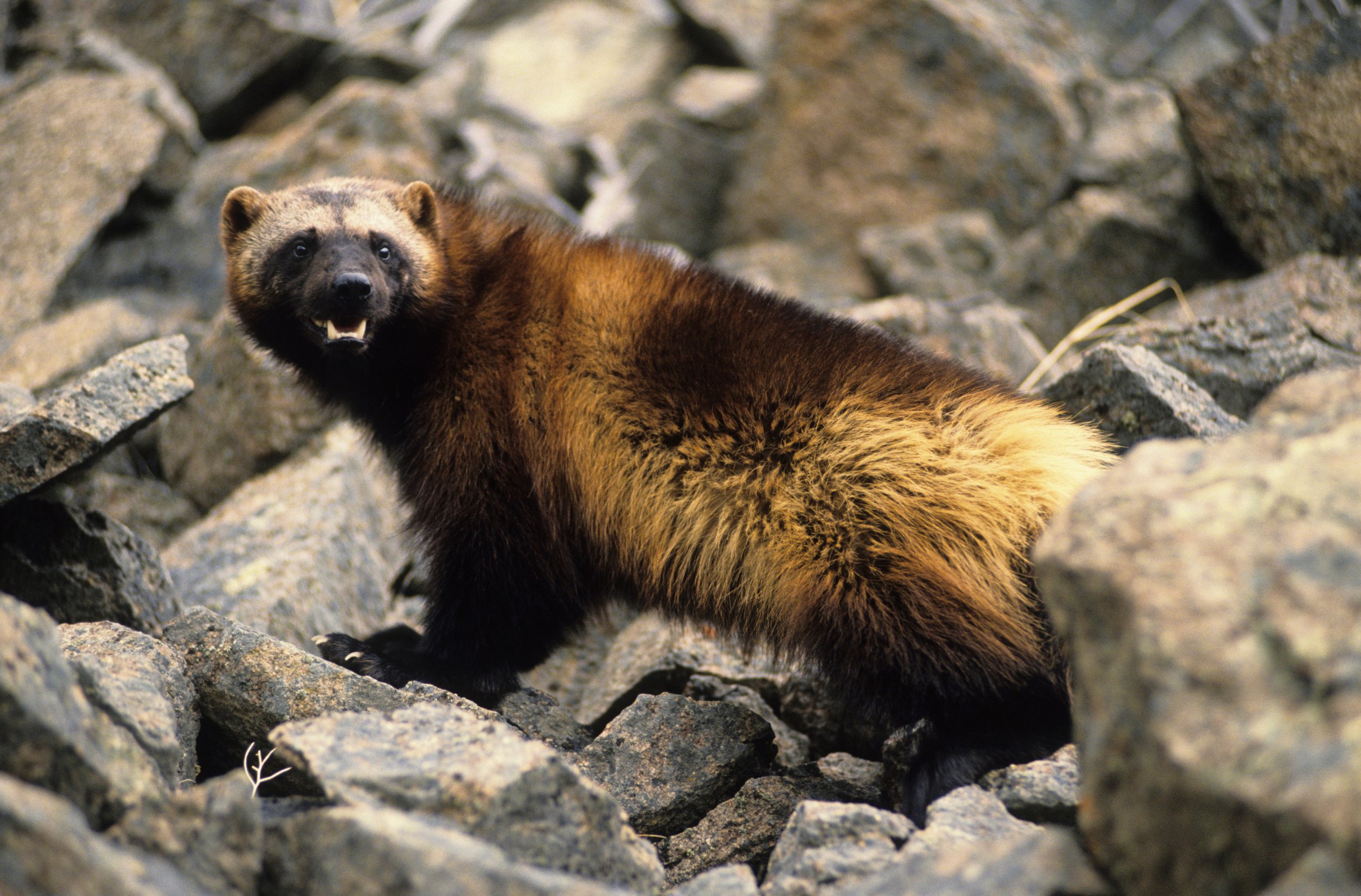
Sierra Nevada Wolverine Reintroduction
Photo by Daniel J. Cox
Bringing Them Back!
Californians support wolverine reintroduction
IWS has been working on the feasibility of reintroducing wolverines to the Sierra Nevada mountains since 2006.
In discussions with the U.S. Fish and Wildlife Service regarding the reintroduction, they suggested finding out what Californians think about the idea of wolverine reintroduction. Therefore, IWS partnered with Corona Insights to conduct a public opinion poll. The incredible level of support for this recovery action was very inspiring and IWS is ready to move forward to start the project.
Restoring species to formerly occupied areas can be one of the most rewarding things humans can do for species conservation, especially when human actions likely contributed to the demise of a species. By helping to restore a region’s biodiversity, we help restore ecological function for generations to come.
Wolverine outside of Alaska were just listed as threatened by the U.S. Fish and Wildlife Service at the end of November 2023. This listing was in part due to small population size and a restricted range where the wolverine is found in the lower 48 states.
MAKE A DONATION TO HELP RESTORE WOLVERINES
Click the button below to donate via Credit Card, PayPal or Venmo
To donate by check, please make out to:
Institute for Wildlife Studies
Send to:
Institute for Wildlife Studies
Wolverine Project
PO Box 1104
Arcata, CA 95518
Reintroducing a species to an area it historically occupied requires careful consideration to help ensure success. Are the factors that lead to their extirpation no longer present? Is there sufficient suitable habitat still available for the species? Are there healthy populations of the species elsewhere that can provide reintroduction stock? The Institute for Wildlife Studies has spent almost two decades working on the appropriateness and feasibility of restoring wolverines to the Sierra Nevada, and we firmly believe there is a high probability the effort can be successful. The vast majority of the high elevation areas of the Sierra Nevada, areas most likely to be occupied by wolverines, are managed either as part of national parks or within wilderness areas that are fully protected. In fact, the Sierra Nevada contains one of the longest tracks of protected wild areas in the U.S. outside of Alaska. IWS is now ready to move forward with implementing the reintroduction plan and we are just awaiting a Memorandum of Understanding from the California Department of Fish and Wildlife to begin the project.
Whether or not you can contribute, thank you for taking the time to learn more about this inspiring wildlife restoration program.
IWS is a non-profit organization under IRS code 501(c)(3) and donations are tax-deductible to the full extent allowed for by law.
More Information
Wolverines are the largest terrestrial member of the weasel family (Mustelidae) and are found in northern latitudes around the world. They reside in remote wilderness regions, persist at very low population densities, and are seldom seen by human visitors. However, wolverines play an important role as scavengers, often feeding on the carcass remains left by larger predators such as wolves, grizzly bears and mountain lions.
The Sierra Nevada mountains and the central Rocky Mountains once supported populations of wolverines, the southern most portion of their range. The high elevations of the Sierra Nevada mountains provided habitat features similar to those supporting wolverines at more northern latitudes. However, the wolverine population in the Sierra Nevada began to decline in the early 20th century, likely due to indiscriminate poisoning of predators, fur trapping, and reduction of predators upon which they depended for carrion. By the 1930s, the wolverine population was thought to be down to 15 pairs in the state. However, extensive effort to monitor for other furbearers (fisher, red fox, martens) over the last three decades failed to detect any wolverines. The Institute for Wildlife Studies also conducted a winter wolverine survey in the Sequoia/Kings Canyon national parks, and failed to detect any wolverines.
In the winter of 1979/1980 wolverine tracks were observed in Sequoia/King Canyon National Park, and in 2008 a wolverine was detected on a trail camera near Truckee, California. Researchers extracted DNA from feces collected from this individual and it was found to be a male that was most closely related to wolverines from Idaho. In 2023 another wolverine was detected in the southern Sierra Nevada. As with the 2008 individual, researchers believe these are young dispersing male wolverines that are known to make long distance movements looking to establish their territories. While these dispersing individuals appear to show up in California every 10-20 years, female wolverines do not make similar long distance movements, so it is unlikely a population could be reestablished in California by natural processes.



